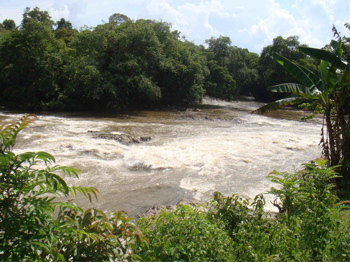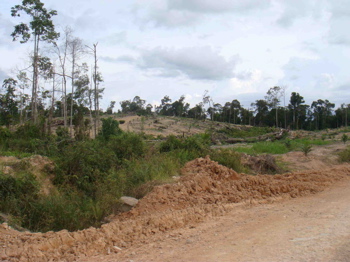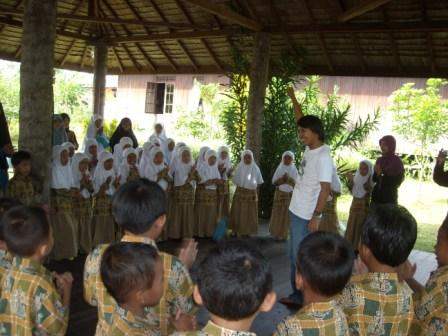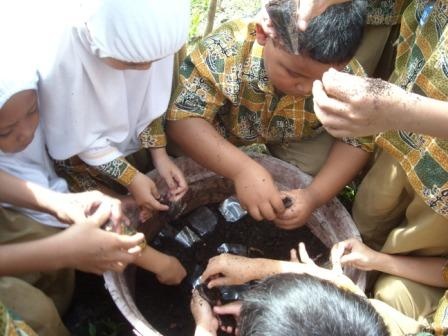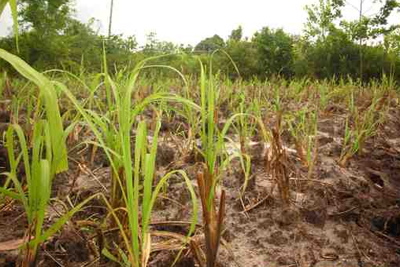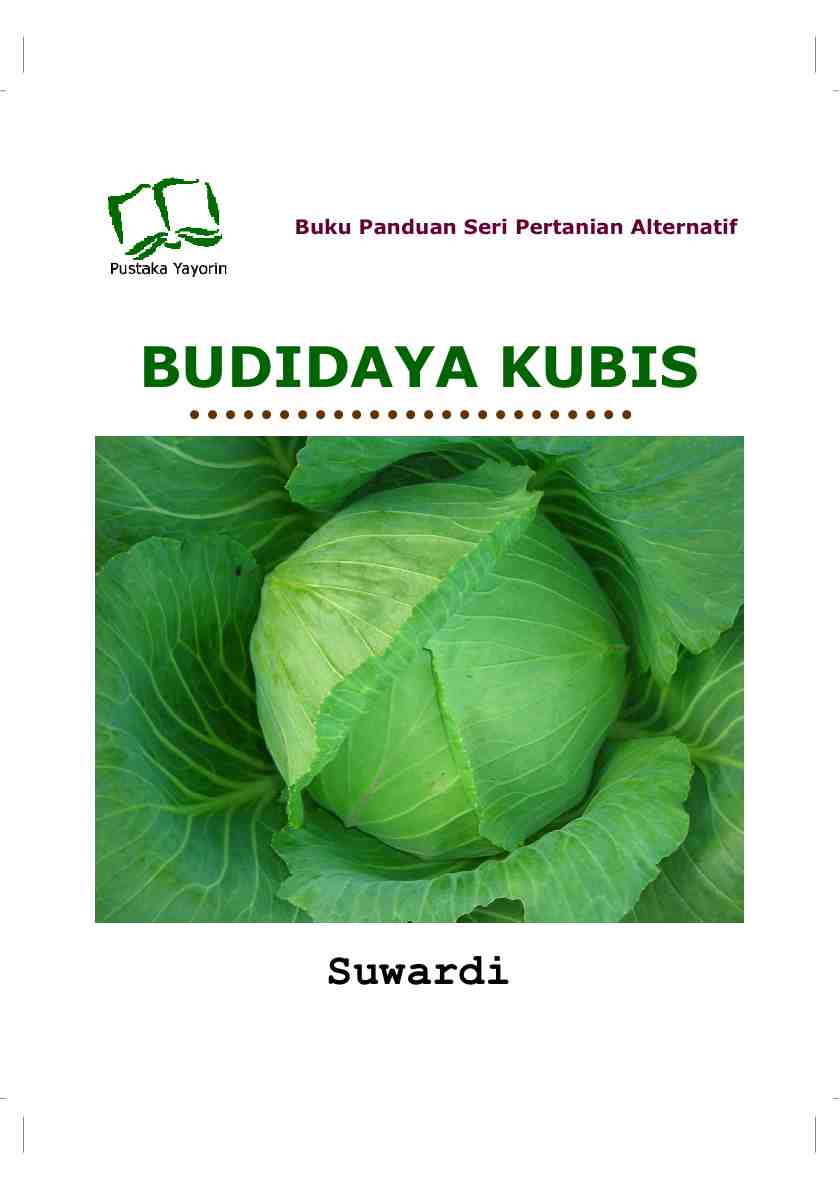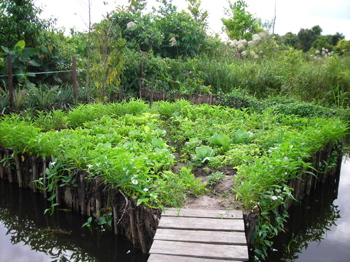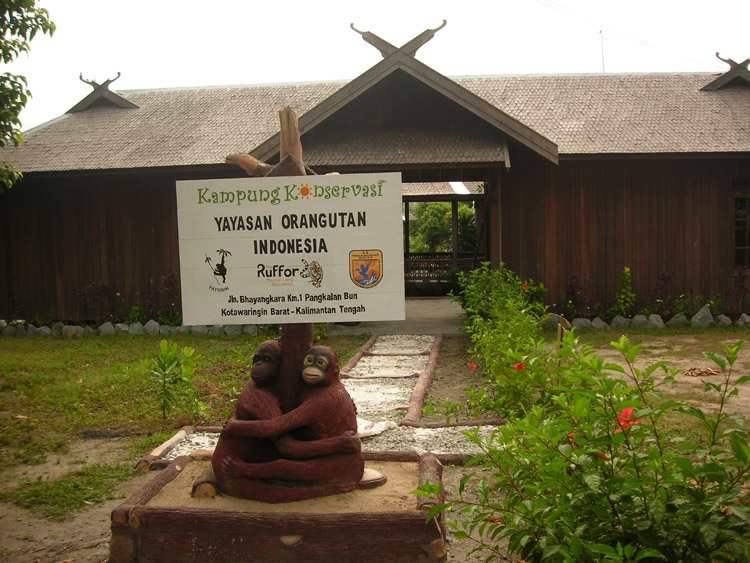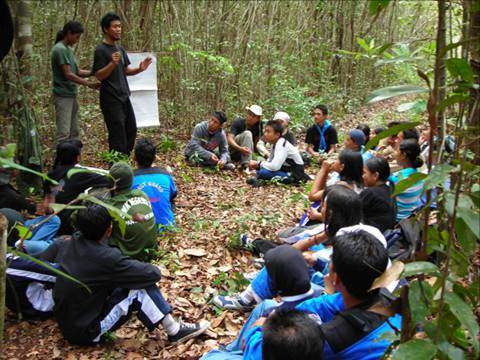After my last my about the day at Camp Leakey I received a short email from the Office reminding me that I was supposed to be writing about Orangutan Awareness Week! Whoops.
Sally and the Yayorin team will be able to tell you of all the activities. I thought I would offer a simple, personnel view on why I have always supported the week.


We all need trees.
We know how to save orangutans – you just stop chopping down the forest and hunting them. Leave them alone and they will be just fine. But that isn’t happening. The situation here in Borneo and in Sumatra is very bad. Just yesterday, we were told of a proposal to convert another 10,000ha (100km2) into an oil-palm plantation. Not all of that land is forest, but a lot of it is and I guarantee there are still orangutans, monkeys, hornbills and a host of other birds and smaller mammals living there.

Spot the difference.
What lay behind the local government’s decision to give up more forest? There are a host of reasons but perhaps the ultimate explanation is simply that the return from logging and palm oil translates to cash whereas the returns from standing forest are often intangible. That is a balance that has to be rectified. Which is exactly why Orangutan Awareness Week is so important:
- The loss of orangutans and their habitat is irreversible.
- Consumers need to be aware of the true cost of the products they buy. The driving force behind the move towards sustainable palm oil is consumer pressure.
- National governments need to be aware of the impact of the trade decisions they make. The US is to be applauded for its recent amendment to the Lacy Act which will go a long way to stopping the import of illegally felled timber.
- Here, the local Government needs to be aware that floods which plague the riverside communities are linked to deforestation upstream.
- Farmers need to know that there are alternatives to slash and burn agriculture, that their household income can improve by better use of the land.
- There are huge ethical issues involved in the loss of orangutans as a species let alone the abhorrent killing of individuals. I feel this keenly and am sure many of you do too. However, climate change has now made the loss of their habitat an ethical issue too: tropical forests can play a significant role in mitigating against climate change. Truly, saving orangutans can now help humankind.

Without Orangutan Awareness Week how many people will know of the link between this smoke from forests and the rise in sea level? Without the work of groups like Yayorin how many people will learn it doesn't have to be this way?
We all have to be involved in this and that’s why Orangutan Awareness Week is international. The bottom line is whether to destroy forests or to save them will remain a choice that many people will have a hand in making. Only with complete awareness will we all make the best choice and orangutans are the perfect flagship or ambassadors for the forest.


What we all need - forests "lungs of the planet"
There are half-a-dozen or so places, Tanjung Puting National Park and the Lamandau Wildlife Reserve among them, that are safer today than they probably have been at any time for the past thirty odd years. Saving them has been a battle and we are now working on securing the peace. We can be proud of those successes but they are not enough. Certainly, we can not be drawn into trading off a few parcels of safe forest for devastation elsewhere. As the 10,000ha mentioned above shows, the battle lines are still being drawn. That has to stop.

The battle lines

I was touched to see the blog by Art for Gorillas on the Wildlife Direct. ). If children in Rwanda can be galvanised to care for orangutans what can’t be done?
As always, thank you for your support,
Stephen



